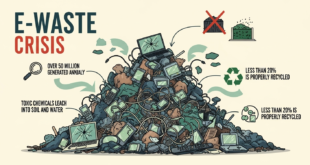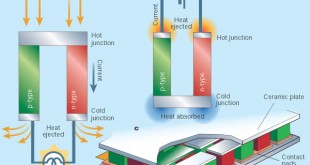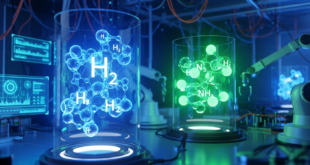Tungsten is one of the hardest metals on the earth, and many scientists compare it to diamond. Tungsten is a dull silver-colored metal with the highest melting point of any pure metal. Pure tungsten melts at a whopping 6,192 degrees F (3,422 degrees C) and won’t boil until temperatures reach 10,030 F (5,555 C), which is the same temperature as the photosphere of the sun.
Also known as Wolfram, from which the element takes its symbol, W, tungsten is more resistant to fracturing than diamond and is much harder than steel. It is the refractory metal’s unique properties – its strength and ability to withstand high temperatures – that make it ideal for many commercial and industrial applications.
Tungsten also has the lowest co-efficient of thermal expansion of any pure metal. The low thermal expansion, high melting point and tensile strength of tungsten originate from strong metallic bonds formed between tungsten atoms. Thus, alloying small quantities of tungsten with steel greatly increases its toughness.
Tungsten’s primary application for over 100 years has been as the filament in incandescent light bulbs. Due to tungsten’s ability to keep its shape at high temperatures, tungsten filaments are now also used in a variety of household applications, including lamps, floodlights, heating elements in electrical furnaces, microwave ovens, x-ray tubes and cathode-ray tubes (CRTs) in computer monitors and television sets.
The metal’s tolerance to intense heat also makes it ideal for thermocouples and electrical contacts in electric arc furnaces and welding equipment. Applications that require a concentrated mass, or weight, such as counterweights, fishing sinkers, and darts often use tungsten because of its density.
In the quest to build a better and safer lithium-ion battery for use in cell phones, laptops and electric vehicles, a team of engineers at Rensselaer Polytechnic Institute in New York recently demonstrated how they could use aqueous electrolytes instead of the typical organic electrolytes to assemble a battery that still performs well. The breakthrough came from dense-packing niobium tungsten oxide particles in the battery’s electrode, which greatly improved its storage capacity without affecting its fast-charging capability, the researchers said. “It turns out that niobium tungsten oxide is outstanding in terms of energy stored per unit of volume,” said Nikhil Koratkar, who headed the research team at Rensselaer.
An inexpensive material, made from tungsten disulfide flakes just a few atoms thick, has helped to improve the performance of organic solar cells. The discovery by Saudi Arabian researchers could be an important step toward bringing these photovoltaic cells into wider use for generating clean electricity. The team found that the tungsten disulfide layer has a lower resistance than the conjugated polymer previously used, and is also better at gathering electron vacancies, or “holes” than the other materials, leading to improved performance.
In May 2020, a Hong Kong-California research collaboration reported building an artificial eye with capabilities that come close to those of the human eye. The artificial eye is made with an aluminum-lined tungsten Shell that serves as a round casing.
Metal 3D printing has become well-established and the range of metals that can be 3D printed is increasing quickly. Industrial 3D printer supplier ExOne Dec. 13 reported adding iron infiltrated with bronze and bonded tungsten to the range of metal and ceramic powders that can be used with its multi-material M-Flex machines. The company said one of the main reasons it has seen demand for using iron to 3D print parts instead of stainless steel is lower costs. Using bonded tungsten for 3D printing, ExOne collaborated with partner companies to produce products to replace lead parts in medical imaging and aerospace applications.
The European Commission recently recognized tungsten as having the highest economic importance of all raw materials. The mineral is already listed as critical in the United States, Japan, India and Australia.
Military applications of tungsten
(1) Tungsten products are non-toxic and environmentally friendly. Due to the environmental hazards caused by lead and depleted uranium, tungsten products have been used to replace past raw materials for the manufacture of bullet warheads to reduce the environmental hazards caused by military materials.
(2) Tungsten has the characteristics of high hardness and high temperature resistance, whose military use includes: tungsten alloy bullet, shrapnel head; balance pinball in missiles and aircrafts; measuring core of armor-piercer; kinetic armor-piercer; armor and artillery shell; grenade; bullet-proof vehicle, armored tanks, artillery parts, gun; rocket accessories and so on.
(3) Tungsten is a rare high melting point metal. Tungsten metal can endure high temperature without deformation and is free from air erosion at room temperature. This feature is widely used in the military. It’s mainly used for the production of high-speed steel, high-speed cutting tools, and super-hard mold. In aviation and rocket technology, as well as in other sectors that require high thermal strength of machine parts, engines and some other instruments, tungsten and alloys of molten metals (tantalum, niobium, molybdenum, rhenium) are used as heat-resistant materials.
(4) The most significant use of tungsten is for a variety of high-speed ammunition, especially armor-piercer. Tungsten is almost an indispensable part of armor-piercer. The kinetic armor-piercer made from tungsten alloy can compete directly with the depleted uranium bomb (depleted uranium has become an environmental problem).
(5) Tungsten can also be used for nuclear weapon material shell protection
Tungsten alloys
Pure tungsten isn’t that hard — you can cut through it with a handsaw — but when tungsten is combined with small amounts of carbon, it becomes tungsten carbide, one of the hardest and toughest substances on Earth. Tungsten is also used in alloys, mixed with steel and copper. It provides these elements exceptional hardness. The most significant use of tungsten is in cement carbide. Using it hardens, many cutting and drilling tools are made of tungsten. Tungsten also has many other applications; people use it in medical facilities to protect patients from radiation. Automobile industry also uses tungsten for various purposes, considering this meal us resistant to wear.
Tungsten metal can be combined with other metals to increase their strength and resistance to wear and corrosion. Steel alloys often contain tungsten for these beneficial properties. Many high-speed steels — those used in cutting and machining tools like saw blades — contain around 18 percent tungsten. Considering that tungsten melting points are high, this metal is ideal for rocket nozzles, and it has a great application in aerospace and automotive industry. Tungsten alloys also found their use in military industry, bullets, missiles, and pistols are made from this metal, due to its hardness.
Airframe structures of supersonic vehicles capable of speeds in excess of Mach 2.5 will invariably experience temperatures well in excess of 150°C, the temperature capability limit of most aluminium alloys in use today. Most modern fighter aircrafts sustain these temperatures by using titanium alloys. In addition to being temperature resistant, titanium alloys are more resistant to damage than aluminium and composites. Their mechanical properties such as strength and stiffness, are more compatible with those of composites than that of aluminium, making titanium the ideal choice for airframe substructures that are part metal and part composite.
While Ti-6Al-4V has been predominantly used in airframe applications, Ti-6-22 a newer alloy with improved strength and ability to retain it at temperatures higher than that possible with Ti-6Al-4V has been finding applications in structural applications recently. Alloy 54M is also being explored as an easily machinable and cheaper replacement for Ti-6Al-4V. In the future, it is likely that newer processes like ‘meltless titanium’ which are presently being researched will gain importance making alloys with compositions impossible through melting route a reality.
Tungsten-steel alloys are also used in the production of rocket engine nozzles, which must have high heat resistant properties. Other tungsten alloys include Stellite (cobalt, chromium, and tungsten), which is used in bearing and pistons due to its durability and resistance to wear, and Hevimet, which is made by sintering a tungsten alloy powder and is used in ammunition, dart barrels, and golf clubs.
Superalloys made of cobalt, iron or nickel, along with tungsten, can be used to produce turbine blades for aircraft.
Hypervelocity projectiles made of tungsten are New Super-Weapon to Counter Russia’s Nuclear Warheads
US is also developing new super weapon, tungsten based hypervelocity projectiles. An April 11, 2016, press report states: The Pentagon wants to take a weapon originally designed for offense, flip its punch for defense and demonstrate by 2018 the potential for the Army and Navy to conduct missile defense of bases, ports and ships using traditional field guns to fire a new hypervelocity round guided by a mobile, ground variant of an Air Force fighter aircraft radar. The Pentagon’s Strategic Capabilities Office will test-fire a radical new missile defense system in less than a year said report in Jan 2018. The Hyper Velocity Projectile, a supersonic artillery round, is fired from ordinary cannon at 5,600 miles per hour and can kill incoming threats for a mere $86,000 a shot.
The U.S. has begun considering adding a new kinetic energy weapon to its arsenal in hopes of countering advances in Russian nuclear technology that could potentially threaten U.S. tactical military dominance. In 2013, the U.S. Air Force 846th Test Squadron and civilian researchers at Lawrence Livermore National Laboratory successfully test-fired a kinetic energy projectile, a tungsten-rich shell moving at 3,500 feet-per-second — more than three times faster than the speed of sound — on a specialized track at Holloman Air Force Base in New Mexico.
Called the Kinetic Energy Projectile, the weapon is a tungsten-based warhead launched at more than three times the speed of sound that bursts into numerous flaming, metal fragments easily capable of piercing most conventional types of armor, according to Aviation Week. The principle behind these weapons is the same: hitting the enemy with something very hard and very dense, moving very fast
The Army is looking into fitting the new super-weapon onto existing launch platforms that are capable of supplying sufficient charge to shoot the projectile at such speeds. One reason for the weapon would be to respond to Russia’s pursuit of miniaturized nuclear warheads fired by tanks
Major General William Hix, the Army’s director of strategy, has likened the Kinetic Energy Projectile, designed by the Lawrence Livermore National Laboratory in California, to “a big shotgun shell” that could travel “Mach 3 to Mach 6″ and tear through its targets.
“The way that they have designed it, is quite devastating. I would not want to be around it. Not much can survive it,” Hix said last month at the Booz Allen Hamilton Direct Energy Summit, according to Defense One. “If you are in a main battle tank, if you’re a crew member, you might survive but the vehicle will be non-mission capable, and everything below that…level of protection will be dead. That’s what I am talking about.”
Mach 3 hypervelocity projectiles can be fired from regular 5 inch and 155 mm guns on land and sea. They can revolutionize defense against ballistic missiles because small, smart projectiles can be inexpensive. It takes 300 seconds to pick up such a launched missile’s signature, the missile must be tracked and a vector calculated for defensive projectiles. A single 25-pound projectile can dispense more than a couple of thousand three-gram tungsten (the entire mass would not be the small projectiles) impactors and be fired at hypervelocity by electromagnetic energy. Their impact force—their mass times the square of their velocity—can destroy expensive missiles and multiple warhead.
China dominates Production
Tungsten is primarily extracted from two types of minerals, wolframite, and scheelite. However, tungsten recycling also accounts for about 30% of the global supply. Once tungsten ore has been processed and separated, the chemical form, ammonium paratungstate (APT), is produced. APT can be heated with hydrogen to form tungsten oxide or will react with carbon at temperatures above 1925°F (1050°C) to produce tungsten metal.
Tungsten is vital to a broad spectrum of commercial and military applications, yet there are no mines in the United States producing this durable metal. China is the world’s largest producer of the metal, providing over 80% of the world supply.
At around 67 million metric tons of tungsten, the Middle Kingdom accounted for roughly 82 percent of the global titanium supply during 2018. The world’s second largest tungsten supplier, Vietnam, produced 6 million metric tons last year. Russia, Austria and the United Kingdom round out the world’s top tungsten sources.
Nearly 60 percent of the tungsten consumed in the U.S. during 2018 was used to make the cemented tungsten-carbide, a compound of roughly equal parts tungsten and carbon. Like many of the 35 minerals and metals deemed critical to the United States, China controls the new tungsten coming into global markets. “World tungsten supply was dominated by production in China and exports from China,” USGS penned in its annual report, Mineral Commodity Summaries 2019.
China also happens to be the largest consumer of tungsten, making it a major influencer on the demand side of the price equation. “Beginning in 2017, economic conditions improved in China and elsewhere, resulting in increased tungsten consumption,” USGS penned in its 2019 commodity summaries. “In early to mid-2018, prices of tungsten concentrate and downstream tungsten materials trended upward and then stabilized or decreased during the remainder of the year.”
The United States consumed roughly US$900 million worth of tungsten during 2018, more than half of which came from foreign sources. China, America’s largest source of tungsten products, accounted for 32 percent of imports. Bolivia (9 percent), Germany (9 percent) and Canada (8 percent) were also contributors to U.S. needs for this durable metal.
In recent years, China has put limitations on tungsten mining and exports of this durable metal, causing concerns about global supply of this metal. “China’s government regulated its tungsten industry by limiting the number of mining and export licenses, imposing quotas on concentrate production, and placing constraints on mining and processing,” the USGS wrote.
Whatever the impetus, China’s production and export restrictions resulted in sharp increases in the price. During 2018, tungsten averaged US$330 per metric ton, a 35 percent increase over the US$245 per metric ton average the year before.
References and resources also include:
http://www.samaterials.com/content/192-tungsten-in-military-use
https://www.thebalance.com/metal-profile-tungsten-2340159
 International Defense Security & Technology Your trusted Source for News, Research and Analysis
International Defense Security & Technology Your trusted Source for News, Research and Analysis


